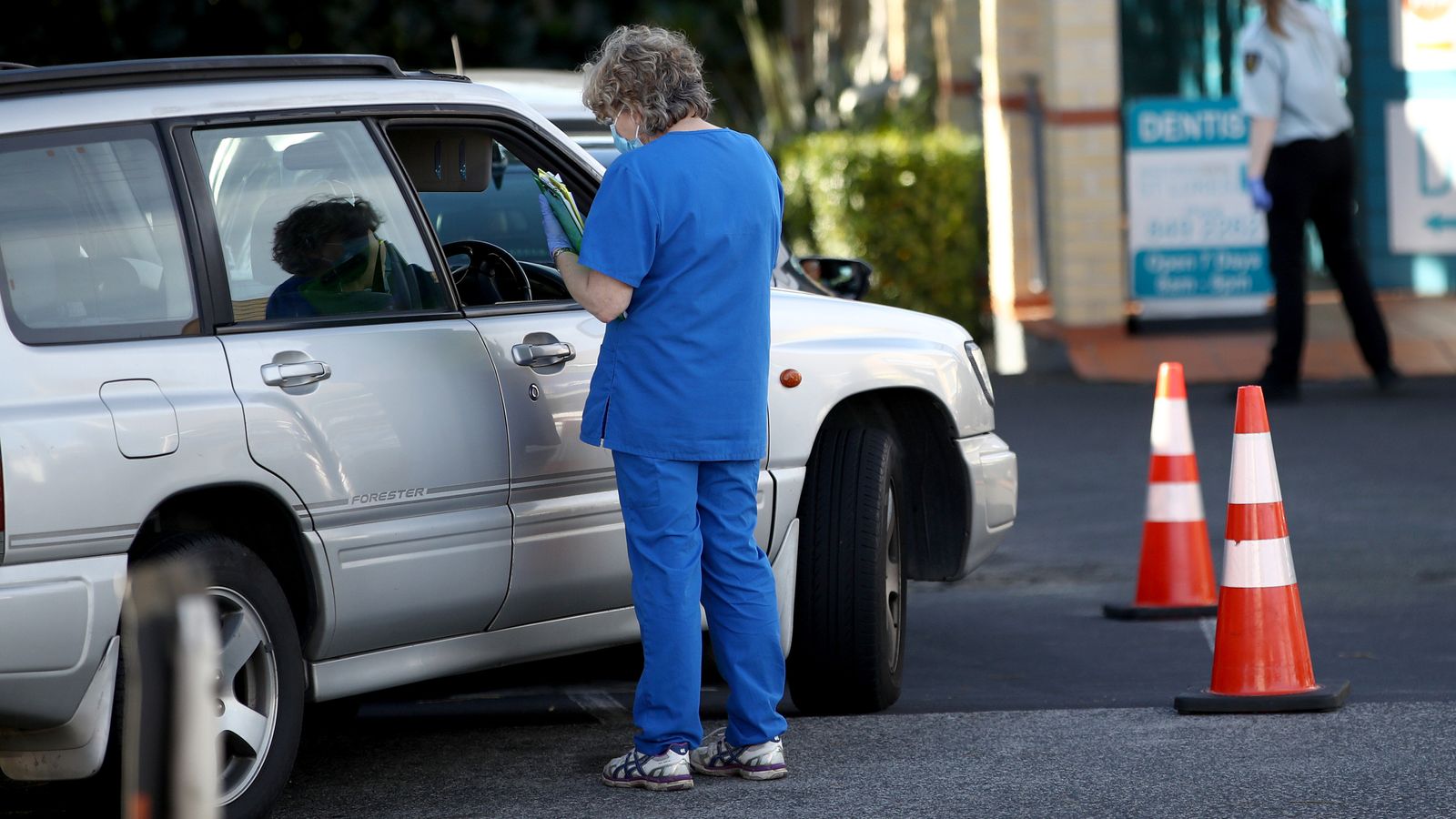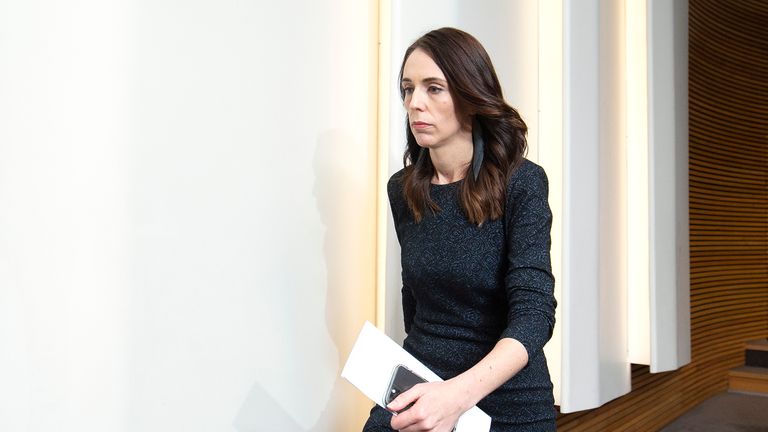Coronavirus has broken out again in New Zealand after more than 100 days and prompted the country’s government to put its largest city into strict lockdown.
Prime Minister Jacinda Ardern on Tuesday said four people from one family in South Auckland were found to have contracted COVID-19.
These are the first new cases of locally-acquired coronavirus after New Zealand went 102 days without any domestic transmission.
In response, Auckland, on New Zealand’s North Island, will be placed into “Level Three” restrictions from midday on Wednesday.
Local residents are being told by Ms Ardern to “stay home to stop the spread” of the disease and “act as if you have COVID, and as if the people around you have COVID”.
Those in Auckland are being urged to work from home and only leave their houses for “essential movements” such as going to the supermarket or local park.
But Ms Ardern urged against panic-buying at supermarkets on Tuesday night.
Schools and nurseries will close to pupils apart from the children of key workers, while gatherings of more than ten people will be restricted.
Bars and restaurants are also being told to close, while travel into and out of Auckland will be restricted to those returning home to the city, or those leaving who live elsewhere.
Police are due to issue further information on the use of roadblocks around Auckland on Wednesday.
Announcing the restrictions will be in place for three days until midnight on Friday, Ms Ardern said: “One of the most important lessons we’ve learned from overseas is the need to go hard and go early.
“And stamp out flare-ups to avoid the risk of wider outbreak.
“As disruptive as it is, a strong and rapid health response remains the best long-term economic response.
“In line with our precautionary approach, we will be asking Aucklanders to take swift action with us.”
She added: “These three days will give us time to assess the situation, gather information, make sure we have widespread contact tracing so we can find out more about how this case arose and make decisions on how to respond to it once we have further information.”
The rest of New Zealand will be moved to “Level Two” restrictions from midday on Wednesday, Ms Ardern announced.
Earlier on Tuesday, the New Zealand Herald newspaper reported a retirement village in Christchurch, the largest city on the country’s South Island, had gone into lockdown after residents displayed symptoms of respiratory illness.
:: Listen to the Daily podcast on Apple Podcasts, Google Podcasts, Spotify, Spreaker
In other developments, the number of confirmed coronavirus cases around the world has reached 20 million.
The milestone – based on a count by the Johns Hopkins University, which has been tracking the development of the pandemic – was reached in the early hours of Tuesday.
Experts believe the real figure of worldwide cases is much higher due to testing limitations and the fact that as many as 40% of people infected have no symptoms.


